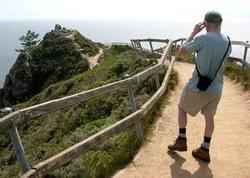




Operations, maintenance, and stewardship are essential to the safe use, enjoyment, and long-term success of any trail.
It's not as glamorous as building the trail. There is no ribbon cutting for a maintenance program and seldom does upkeep win a national award. Yet, operations, maintenance, and stewardship are essential to the safe use, enjoyment, and long-term success of any trail.
by Robert (Bob) Searns, Owner, Robert Searns and Associates, Inc.

It's not as glamorous as building the trail. There is no ribbon cutting for a maintenance program and seldom does upkeep win a national award. Yet, operations, maintenance, and stewardship are essential to the safe use, enjoyment, and long-term success of any trail. Increasingly, planners and elected officials want to see a workable O & M plan. They want to know the cost and how it will be funded.
Indeed, an excellent project concept may die on the vine if these challenges are not adequately addressed. Here is an outline of the key elements of this vital aspect of trail management:
Operations and maintenance refers to the day-to-day upkeep as well as the smooth and safe functioning of a trail, greenway or trail/greenway system.
Stewardship refers to long-term care and oversight of the trail resource. This is essential to assure it will be sustained as a quality component of the community infrastructure and a good neighbor to adjacent properties and surrounding natural environment. Stewardship also includes building community support and advocacy so the integrity of the trail or greenway will not be compromised in the future.
Routine maintenance refers to the day-to-day regimen of litter pick-up, trash and debris removal, weed and dust control; trail sweeping, sign replacement, tree and shrub trimming and other regularly scheduled activities. Routine maintenance also includes minor repairs and replacements such as fixing cracks and potholes or repairing a broken handrail.
Remedial maintenance refers to correcting significant defects as well as repairing, replacing, or restoring major components that have been destroyed, damaged, or significantly deteriorated during the life of the project. Minor repairs such as repainting, seal coating asphalt pavement, or replacing signs may occur on a five to ten-year cycle. Major reconstruction items might occur over a longer period— up to 100 years or more— or after an event such as a flood. Other examples include stabilization of a severely eroded hillside, repaving a trail surface, or replacing a bridge. Remedial maintenance should be a consideration in formulating a long-term capital improvement plan, though budgeting could be on an individual and as-needed or anticipated basis.
A quality O & M program addresses specific required tasks and begins with sound design, durable components, and a comprehensive management plan. The responsible officials and entities should embrace the plan at the beginning.
Programs and protocols that will endure should be instituted, including training of field and supervisory people. In addition, community groups, residents, business owners, developers and other stakeholders should be engaged in the long-term stewardship effort.
The following guiding principles will help assure preservation of a first class system:
An effective O & M plan should include the following areas:
Following are some of the typical O & M Activities for various types of trail amenities:
User safety is critical to trail design, operations and management. Trail planners and managers should implement a safety program that includes: systematic risk management assessment, inter-agency design review for all proposed improvements and accident and crime reporting. In addition to department managers, planners, designers and engineers, law enforcement, fire/rescue and field maintenance personnel should be consulted in the design and review process.
Important steps in this process include:
Several steps can be effective on organizing leadership and effective administration of an O & M program including:
O & M costs and revenue
O & M costs can vary substantially depending on the facility, climate, and complexity of the system. For urban trail systems an annual per-mile cost might run from $2500 to $10,000.
Different sources of revenue may be identified including:
While the annual O & M costs may seem intimidating, it is important to note that the return to the community in terms of recreational benefits, health and fitness. and economic development have been shown through a number of studies nationwide to be multi-fold.
A proper O & M program will reduce long-term costs by extending the life of trails and trail components, and it will win the support of the residents, homeowners, and businesses. A community with trails and greenways needs to invest over the long term in a quality O & M program. Indeed, a community, state or nation cannot afford to not make that investment.
Ice Age National Scenic Trail: Trail Stewardship Notebook
posted Mar 27, 2024
The Ice Age National Scenic Trail (NST) is a thousand-mile footpath highlighting Wisconsin’s renowned Ice Age heritage and scenic beauty. The Ice Age Trail Alliance (IATA) and its partners can shape users’ experiences. As stewards of the land and the Trail, we can help users develop a connection with the land and create a sense of wonder — even pique their curiosity enough to further explore the Trail.
posted Nov 25, 2023
This white paper provides collected best practices on winter bikeway maintenance as seen in US cities and around the world. The paper covers snow removal from bikeways, different types of de-icing surface applications and their advantages/disadvantages, and best practices for winter maintenance prioritization and scheduling. The paper also includes a brief discussion on innovative winter maintenance techniques either in use or in development.
Winter Maintenance Resource Guide
posted Nov 25, 2023
Who is responsible for winter maintenance—property owners or government agencies—and what are the challenges?
posted Jul 15, 2022
For trails to be considered “sustainable” they must meet these recreational needs while providing adequate protection to the environment while minimizing trail maintenance.
2,036 views • posted 02/05/2018